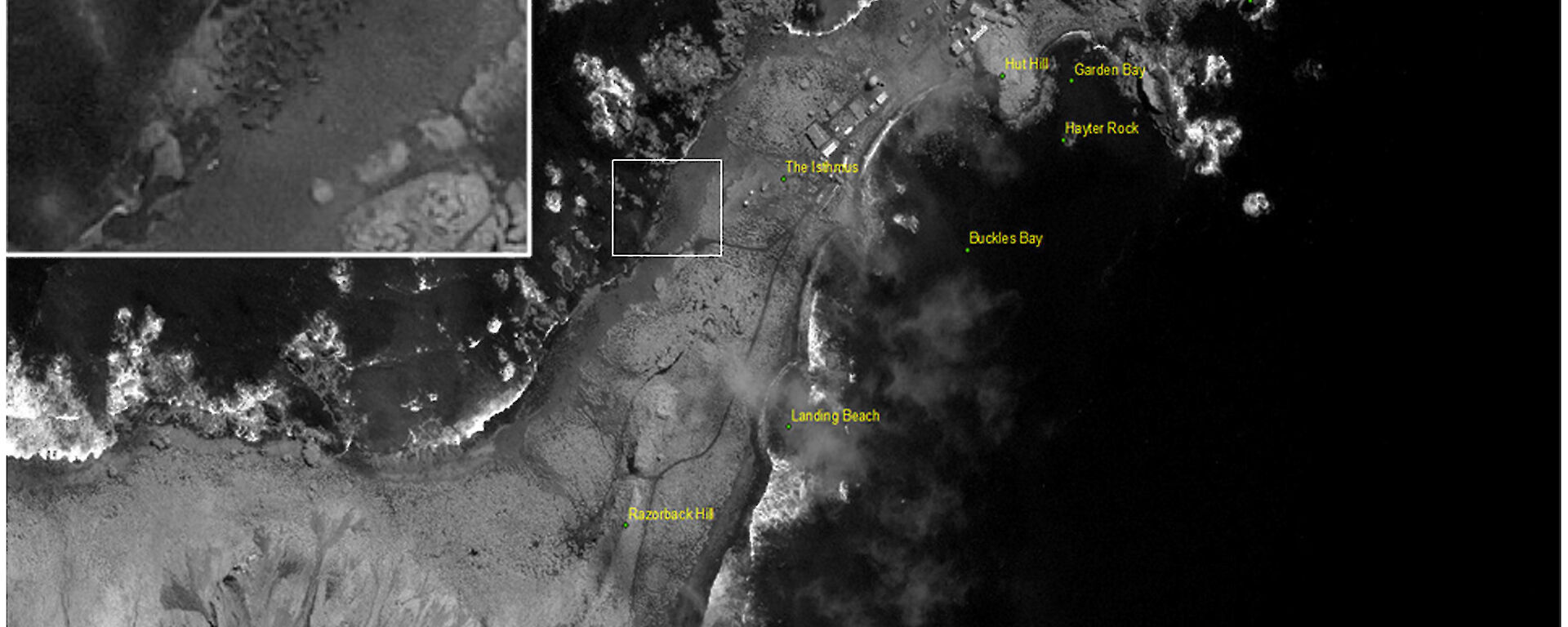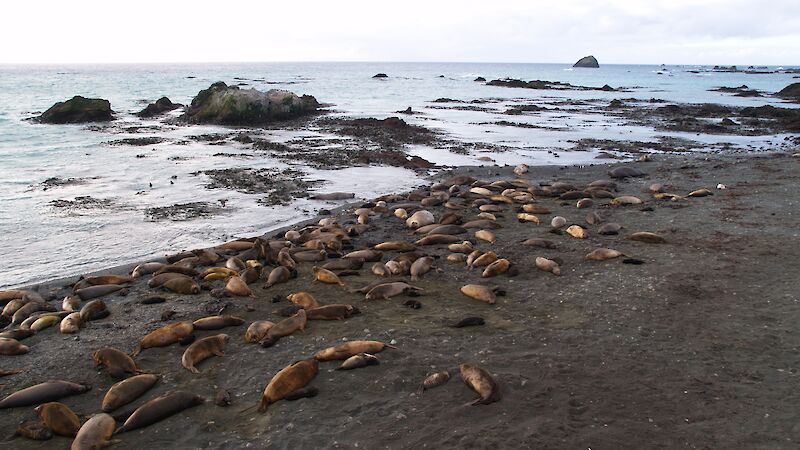Satellite imagery has been used to count elephant seals on Macquarie Island, demonstrating the application of the technique on animals living in remote locations that are difficult to distinguish from their environment.
Scientists from the Institute for Marine and Antarctic Studies (IMAS) and the Australian Antarctic Division used a Geo-Eye-1 satellite image of elephant seals lying on a dark, volcanic-sand beach on The Isthmus of Macquarie Island. The image was captured on 10 October 2011 on the same day that an on-ground census of the seals was being undertaken by expeditioners on the island.
Australian Antarctic Division researcher Mr John van den Hoff said the team processed the image and used simple image viewing software to count the number of female seals on the beach.
‘Counting females is the standard way of quantifying population size in elephant seals,’ Mr van den Hoff said.
‘While adult males could not be differentiated from females on the satellite image, there is typically only one male per 50 females, so it’s unlikely that including males in the counts would significantly affect the overall population counts. Newborn and nursing pups are also small and dark and poorly visible, so it’s unlikely they were counted.’
Female elephant seals are grey/brown in colour and aggregate in harems on the dark, sandy beaches of the island. Despite this ‘cryptic colouration', individual seals were detectable. After three counts from the satellite image, the average number was compared to counts made on the ground on the same day.
‘We found no statistically significant difference between satellite and ground counts for the total number of harems, the total number of seals at The Isthmus or the number of seals per harem,’ Mr van den Hoff said.
While there was a small variance in the numbers between the satellite image and ground counts, these were likely due to an inability to distinguish seals from similar sized rocks, and from animals casting shadows onto adjacent seals in the tightly packed breeding harems. These differences could be resolved by obtaining images on other days during the breeding season, by improving the contrast and sharpness of images, or by increasing the number of re-counts from the images.
IMAS marine and Antarctic scientist, Dr Clive McMahon, said the study demonstrated that remotely sensed images can be reliably used to count elephant seals on remote islands. This opens up the possibility of counting larger populations of the animals on other islands that are rarely visited and for which population trend data are difficult to obtain, such as South Georgia and Heard Island.
Remote sensing has previously been used to count Weddell seals and southern right whales, and its increasing demonstration as a viable research technique could see it extended to counting large terrestrial animals such as zebra, camels, elephants, bison and other grazing herds that occur in open terrain.
‘This technique could revolutionise how animals are counted, to establish population trends and growth rates, which is especially important in light of the current biodiversity crisis,’ Dr McMahon said.
McMahon CR, Howe H, van den Hoff J, et al 2014. Satellites, the all-seeing eyes in the sky: counting elephant seals from space. PLOS One Vol 9, No 3; doi: 10.1371/journal.pone.0092613
Wendy Pyper
Corporate Communications, Australian Antarctic Division



